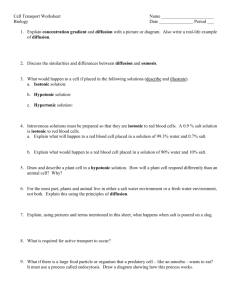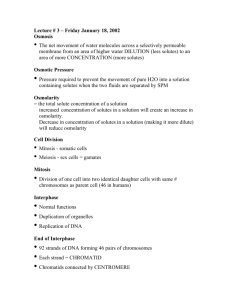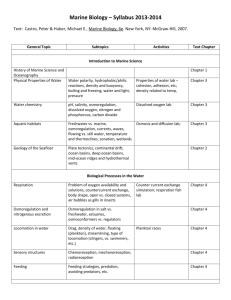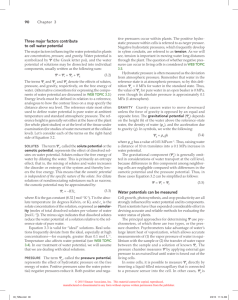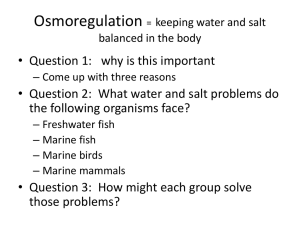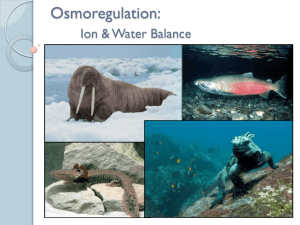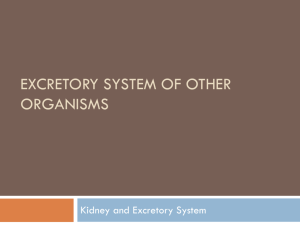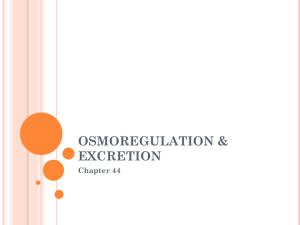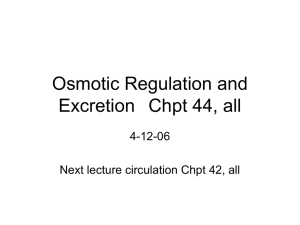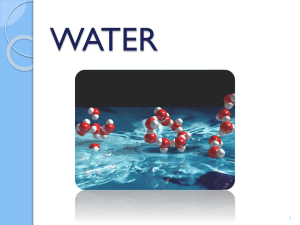Name_________________________________ Marine Biology
advertisement
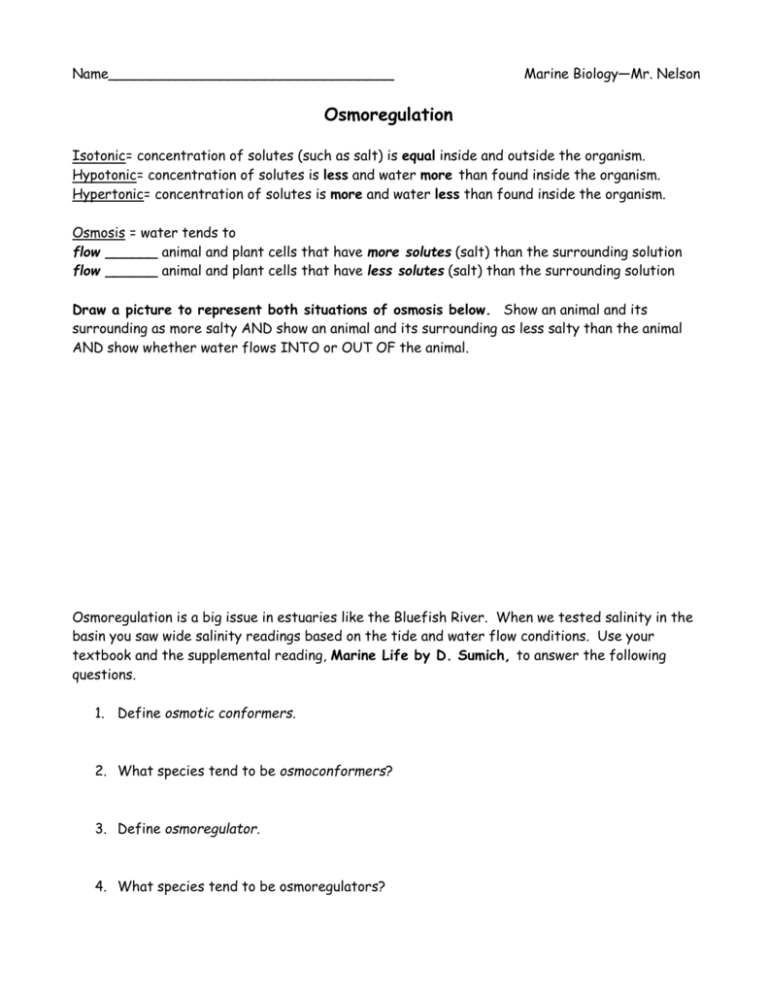
Name_________________________________ Marine Biology—Mr. Nelson Osmoregulation Isotonic= concentration of solutes (such as salt) is equal inside and outside the organism. Hypotonic= concentration of solutes is less and water more than found inside the organism. Hypertonic= concentration of solutes is more and water less than found inside the organism. Osmosis = water tends to flow ______ animal and plant cells that have more solutes (salt) than the surrounding solution flow ______ animal and plant cells that have less solutes (salt) than the surrounding solution Draw a picture to represent both situations of osmosis below. Show an animal and its surrounding as more salty AND show an animal and its surrounding as less salty than the animal AND show whether water flows INTO or OUT OF the animal. Osmoregulation is a big issue in estuaries like the Bluefish River. When we tested salinity in the basin you saw wide salinity readings based on the tide and water flow conditions. Use your textbook and the supplemental reading, Marine Life by D. Sumich, to answer the following questions. 1. Define osmotic conformers. 2. What species tend to be osmoconformers? 3. Define osmoregulator. 4. What species tend to be osmoregulators? 5. The handout Estuaries p. 247 from Marine Life by D. Sumich says that estuarine crabs are isotonic when in seawater, but as the seawater becomes dilute (less salty, as in an estuary) they are _______________. Figure 9.7 on the handout Estuaries p. 247 from Marine Life by D. Sumich shows “Ion concentration of blood”. This is referring to the concentration of solutes such as salt in the blood. 6. Where do these ions (such as salt) in the blood come from? 7. A jellyfish is an osmotic conformer. Explain what this means at high salinities for the concentration of salt (ions) in its body fluid. 8. Which species is a partial osmotic regulator? Why does it say “partial”? 9. Fish who live in both freshwater and saltwater at sometime during their life are called diadromous (Greek: ‘Dia’ is between) Ones that spend most of their lives in the sea, breed in fresh water (such as salmon) are called anadromous Ones that spend most of their lives in fresh water, and breed in the sea (like fresh water eels) are known as catadromous a. what are these types of animals called with regard to osmoregulation? and b. what organ do they have which allows them to survive these variable conditions? Add Sumich page 247 here
